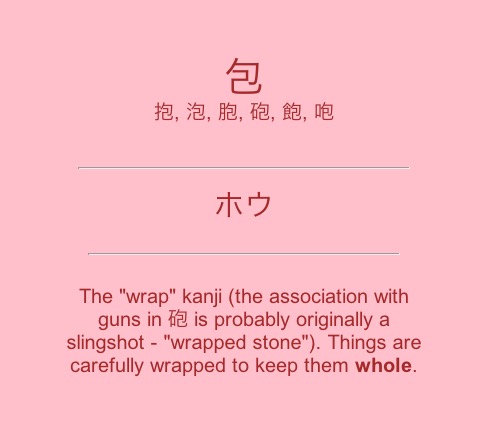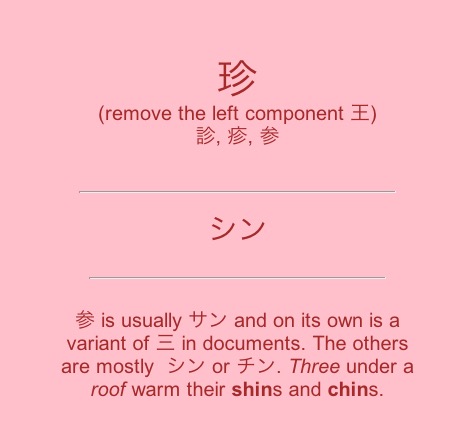There aren’t many shortcuts to learning Japanese. But there is at least one, and we want to share it with you!
People say that there is no Golden Key to the kanji. You just have to learn them. Preferably as words, bit by bit, organically.
But while there is no Golden Key, there is a Silver Key that can help enormously.
You can get it right here. The cost is – free, ’cause Dolly loves you!
It can help you to recognize kanji you only half-know. It can help you to guess the pronunciation of kanji you don’t know at all. It can help you with words where you know the sound but are very vague on the appearance of the kanji, and conversely it can help you with words where you know the kanji but don’t remember the pronunciation.
 You can get it right here. The cost is – free, ’cause Dolly loves you!
You can get it right here. The cost is – free, ’cause Dolly loves you!
It can help you learn the kanji in the first place, and it can help tie together the triplicity of sound, meaning and appearance. It even talks to you (audio on every card).
The secret of this kanji hack is that there are a number – something under 100 – of kanji elements that pretty regularly indicate the on-reading of a kanji (the one usually used in two-or-more-kanji words, which make up the majority of Japanese words). I introduced an important selection of them in my Sound-Sisters article. I have now made a Complete Sound Sisters Anki deck with all the main Sound Sisters (including many not in the article).
I am not a fan of learning kanji in the abstract. I am especially not a fan of trying to learn kanji readings in the abstract. However, the leverage involved in learning the full Sound Sister set is so huge that (pragmatist as I am) I make an exception in this case.
For the investment of mastering a very small set of kanji elements and their sounds (the main part of it will take a week or so at a few minutes a day), one has in one’s hand a key that will make kanji much, much easier. It affects many thousands of words and a substantial proportion of all the Joyo kanji.
 You can get it right here. The cost is – free, ’cause Dolly loves you!
You can get it right here. The cost is – free, ’cause Dolly loves you!
This deck includes the fundamental 90 most common and regular Sound-Sisters elements, main examples of the kanji they appear in, audio and mnemonics for each of them, and other notes where appropriate.
Video introduction to the Sound Sisters
Using the Deck
The deck is designed to be used in conjunction with the Sound Sisters article, which groups together similar sounds with mnemonic narrative. It helps you to learn the elements there and a large number of others.
Download the deck, unzip it (your computer will likely do that for you automatically) and add it to your Anki.
Pro tips:
Use the deck in conjunction with the Sound Sisters page. Remember that you will only need the mnemonics for a short time.
Remember that sounds may sometimes appear as their voiced variants – ひょう as びょう, さい as ざい etc.
You will “finish” the deck quite shortly as it is a small deck by Anki standards. After that, either keep it in your deck-list and run through it when reviews appear, or merge it with your main deck (but don’t do that until the reviews have dropped off to zero or very few most days).
Apply what you’ve learned. Use it to help you learn kanji as words. Also do some Sister-spotting while reviewing words, even with kanji you already know. This gets you used to the Sisters and helps to cement the whole process. You will also be using it to firm up still-learning words where you are a bit shaky on the appearance and/or pronunciation.
You can get it right here. The cost is – free, ’cause Dolly loves you!
Half-Sisters
Another importance of knowing the Sound Sisters is that working with them helps one to be more aware of the many other sound-connections in kanji.
There are a lot of Sound Half-Sisters: that is, sound relationships that are not regular enough to be included in the deck, but certainly very useful. Rather than learning them in the abstract it is best to become aware of them in an organic manner. But the use of the regular Sound Sisters is excellent training for spotting and using the Half-Sisters.
For example, the hyou/byou of 平等 byoudou is found in 評価 hyouka and 評判 hyouban and we will find it in other places too. 忍 and 認 are nin most of the time (the nin of 忍者 ninja).
Such examples are either not regular enough or do not govern enough kanji to be full Sound Sisters, but once we become attuned to these links by using the main Sound Sisters we will find this sort of thing quite often and it is very useful.
斉, sei on her own, is sai/zai often enough (剤, 済, 斎) that I almost included her as a full Sound Sister*. I may do so in a future edition of the deck (of course subscribers will receive any updates as they come along).
This really shows how fluid the situation is, and how getting a feel for the sound-associations of kanji elements can help so enormously.
Some of this really has to work organically, by reading, making friends with kanji, and getting used to Japanese.
But with a set of nearly 100 reasonably regular Sound Sisters that are easily assimilated, we can give the organic process a huge kick-start.
You can get it right here. The cost is – free, ’cause Dolly loves you!
___
* We did eventually include 斉 in the deck.
Cure Dolly, thank you so much! I’ve just done my first session with this deck, it’s put together very nicely and was rather fun. Now to do some reading and see if any of the sisters I met today turn up!
Thank you for your kind words.
It is kind of fun isn’t it? I hope the sisters help you as much as they have helped me!
The examples for 方 show the same examples as those for 正.
Can you tell me the examples for 方 so that I may add them to my deck?
Oh dear, bit of a slip there. The examples for 方 are:
肪, 坊, 紡, 防, 妨, 房, 謗, 傍, 芳, 訪, 放
Not an exhaustive list but these are the most important ones.
I’ve downloaded Sound Sisters but can’t open it. I’m using Windows 10. Any ideas?
(Love the site and your book “Unlocking Japanese”.
You need to unzip it. 7zip is free and should do the job. Sorry for the slow response.